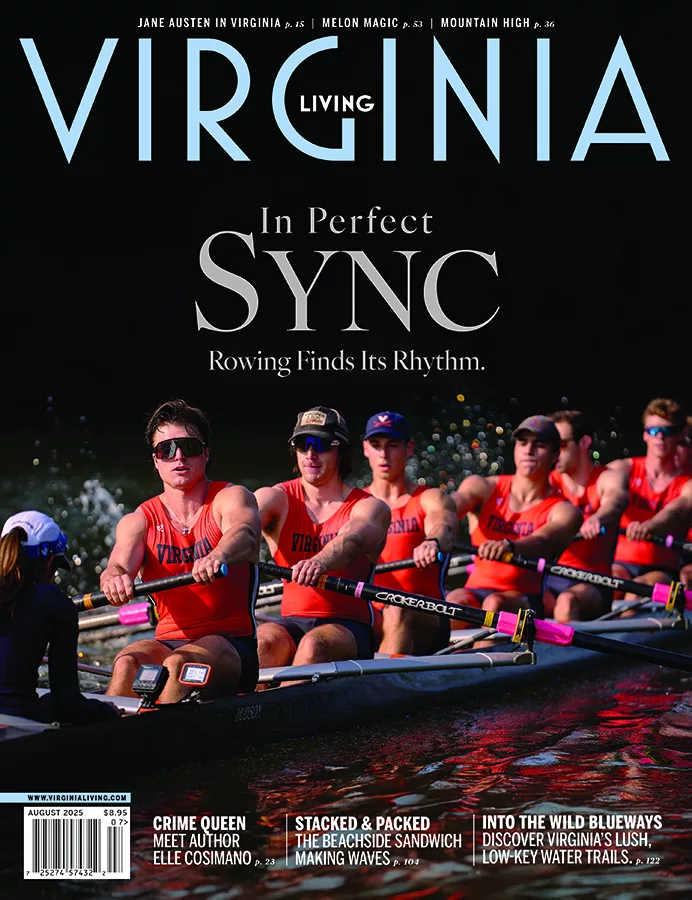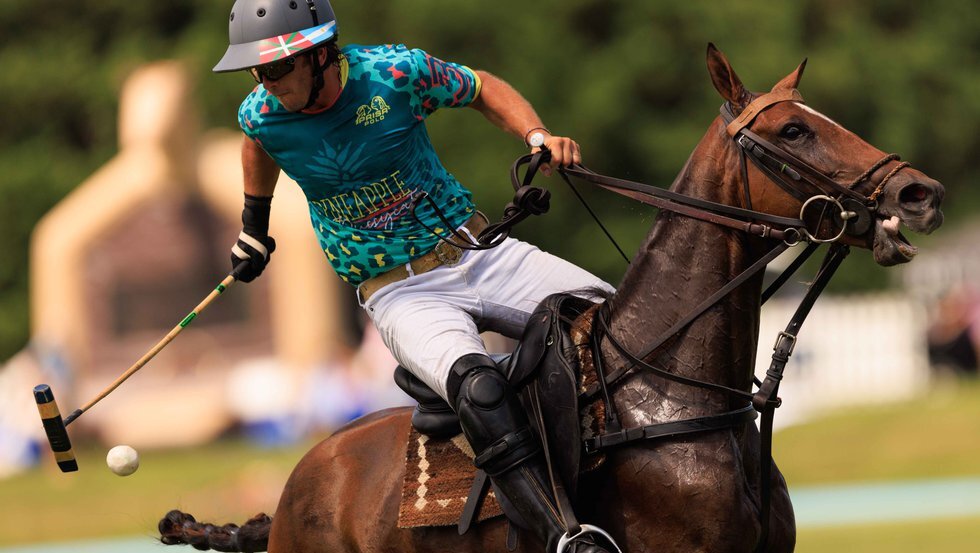The changeable lined seahorse is an engineering marvel.

Illustration by Leah Palmer Preiss
As evidence that nature is given to the occasional flight of whimsy, consider Exhibit A: the lined seahorse. The only seahorse native to the Chesapeake Bay, it’s a fish that doesn’t look like a fish, doesn’t swim like a fish, and, in fact, doesn’t do much swimming at all. With its long snout, mane-like appendages, and dangling tail, it has a distinctly, undeniably equine appearance. But also it can change colors dramatically, its eyes can move independently of each other, and that tail is prehensile, like an opossum’s, allowing the seahorse to cling to aquatic vegetation and underwater objects. In short, when it came to making the lined seahorse, it seems that nature—like a college student in the waning hours of a caffeine-fueled all-nighter—was feeling a little punchy and decided to have some fun.
And yet, for a diminutive sea creature—adults are typically 5 to 6 inches long—the lined seahorse is both a beguiling and intriguing subject of study.
At the Virginia Living Museum in Newport News, a captive breeding program has successfully created a self-sustaining population of lined seahorses to support the museum’s conservation, research, and education missions. In the wild, though, seahorses are not long-lived; to survive to a ripe old age of 3 or 4 years requires no little amount of sheer luck.
Lined seahorses give live birth, and it is actually the male that incubates the babies, in a marsupial-like pouch in its abdomen. As many as 200 or more juveniles might be born at once, forcibly expelled from the pouch in a series of contractions. At that point, according to Chris Crippen, the Virginia
Living Museum’s senior director of conservation and animal welfare, the baby seahorses are fully formed but tiny—less than a half-inch long—and can’t swim very well or hold onto anything, so they just float in the water column. The number of young that are born at once is so large, says Crippen, because the mortality rate is high; only a few might survive to breeding age.
From birth, though, lined seahorses are already active predators. “They have to eat almost constantly,” explains Crippen, because they don’t have a stomach but rather a “through-gut” that requires a steady intake of food. They suck in their prey—mostly tiny crustaceans—through that long snout with a force so strong it makes an audible clicking sound, known as a “snick,” that, at the museum, “you can hear through the glass in the tank” when the seahorses are feeding, according to Crippen. In fact, he says, an indicator of a seahorse’s health is “how strong the snick is.”
Once they reach about a half-inch in length, the seahorses are able to begin seeking something to anchor themselves to with those prehensile tails, such as the eel grass that grows in the bay. “They stay hooked on something like grass or a sponge,” says Crippen. “You don’t find them swimming around in open water.”
To the extent that they do swim, they move about in a drifting manner, propelled with the delicate fluttering of a fan-like dorsal fin, making subtle steering adjustments with pectoral fins near their ears. In this manner, seahorse males and females—which, at least in some cases, are believed to mate for life—engage with each other in a pair-bonding courtship dance, a languid floating ballet during which the male shows off his “pouchability,” says Patrycja Lawryniuk, the aquarium curator at the Virginia Living Museum. “They dance up and down the water column,” she says, locking tails and even changing colors as they do.
This last ability is one of the more intriguing of the seahorse’s unique qualities. With pigment in their skin, “They can change colors to match their surroundings,” explains Lawryniuk. Those colors can be remarkably variable; lined seahorses might display colors from pink to green to banana yellow and chocolate brown, according to Lawryniuk and Crippen. They also have appendages in their skin and on their heads that they can grow out or shorten to mimic the vegetation around them. “They react to patterns a lot,” says Crippen.
And as for that prehensile tail? Unlike most animal tails, which are round, the seahorse’s, when viewed in cross-section, takes the shape of a square prism; in a recent paper published in the journal Science, an international team of engineering and materials-science researchers developed computer and 3-D printed models of the seahorse tail and determined that the structure gives the tail both greater grasping ability and crush resistance in comparison to a round tail. “Understanding the role of mechanics in these prototypes,” wrote the scientists, “may help engineers to develop future seahorse-inspired technologies” in fields such as robotics and medicine.
Seahorse-inspired technologies? Even in whimsy, it seems, there is genius.
This article originally appeared in our April 2020 issue.








